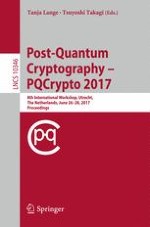2017 | OriginalPaper | Buchkapitel
Transitioning to a Quantum-Resistant Public Key Infrastructure
verfasst von : Nina Bindel, Udyani Herath, Matthew McKague, Douglas Stebila
Erschienen in: Post-Quantum Cryptography
Aktivieren Sie unsere intelligente Suche, um passende Fachinhalte oder Patente zu finden.
Wählen Sie Textabschnitte aus um mit Künstlicher Intelligenz passenden Patente zu finden. powered by
Markieren Sie Textabschnitte, um KI-gestützt weitere passende Inhalte zu finden. powered by
